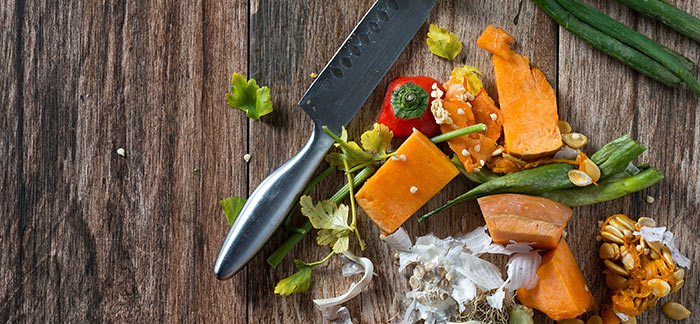
So you’ve already got recycling down to a fine art, but did you know that a compost heap could reduce your waste by a further 30-40%?! Not only will your garden thank you later, but you’ll be saving Mother Earth from the methane that organic waste can produce without access to enough air. It’s really not as complicated as you think. With this simple how to, you’ll be composting in no time!
- Start with an open door policy for healthy organisms. Bare earth should be the base for your compost heap. This way worms and organisms helpful to the process will have easy access. Just remember to lay a few inches of straw or twigs first to help with drainage.

- Alternate between moist and dry. Layer moist ingredients (such as food scraps and tea bags) in between dry ingredients (such as straw, leaves and wood ashes). Keep in mind that wood ashes should be sprinkled onto the pile in thin layers to prevent clumping.
- Put those grass clippings to good use. Grass clippings are a wonderful source of nitrogen that can be used to activate the compost pile and speed the process along. A perfectly manicured lawn doesn’t come easy, so let it do some of the work for you for a change!

- Keep it moist. Water your compost heap occasionally to keep it moist. Alternatively let the rain do its job. However, don’t overwater. Cover your heap with a plastic sheet or carpet scraps to make sure it doesn’t get drenched in the rain. It should not be soaked or sodden. A cover will also help to maintain moisture and heat.
- Give it a turn. Every few weeks, give your compost a quick turn with a shovel or pitchfork. Aerating the pile is essential as oxygen is needed for the organic matter to become the nutrient rich humus you’re after. If you have a ready supply of course material like straw, however, you can happily skip this step.
- Maintain the carbon/nitrogen ratio. Carbon-rich matter includes branches, stems, egg shells, straw, wood ash, coffee filters and conifer needles. Nitrogen-rich matter includes food scraps and green leaves. Your heap should not be greater in nitrogen-rich matter as this makes for a dense and slowly decomposing pile. And if your pile is emitting a bad odour, rule of thumb is to add more carbon-rich matter!

- Feed it right. While a great deal of waste can find its way to the compost heap, some things are a no no. Meat or bones are odious at best in a compost heap. Other waste that belongs squarely in the dust bin are diseased plant materials, dog or cat faeces, dairy products, cooked vegetables and weeds that go to seed.
- Be patient. Remember that it can take anywhere between 9 and 12 months to produce compost that’s ready for the garden. Don’t be alarmed if you find broken bits of egg shells or twigs in your compost. It’s not supposed to look like the compost you buy from the nursery. Simply repurpose these odd bits and ends and return them to the top of your pile. That said, happy composting, you eco warrior you!
Date Published: 26 October 2016
